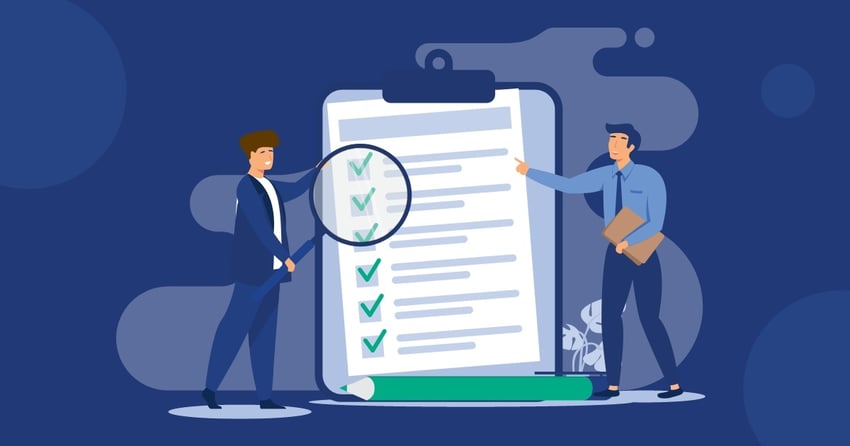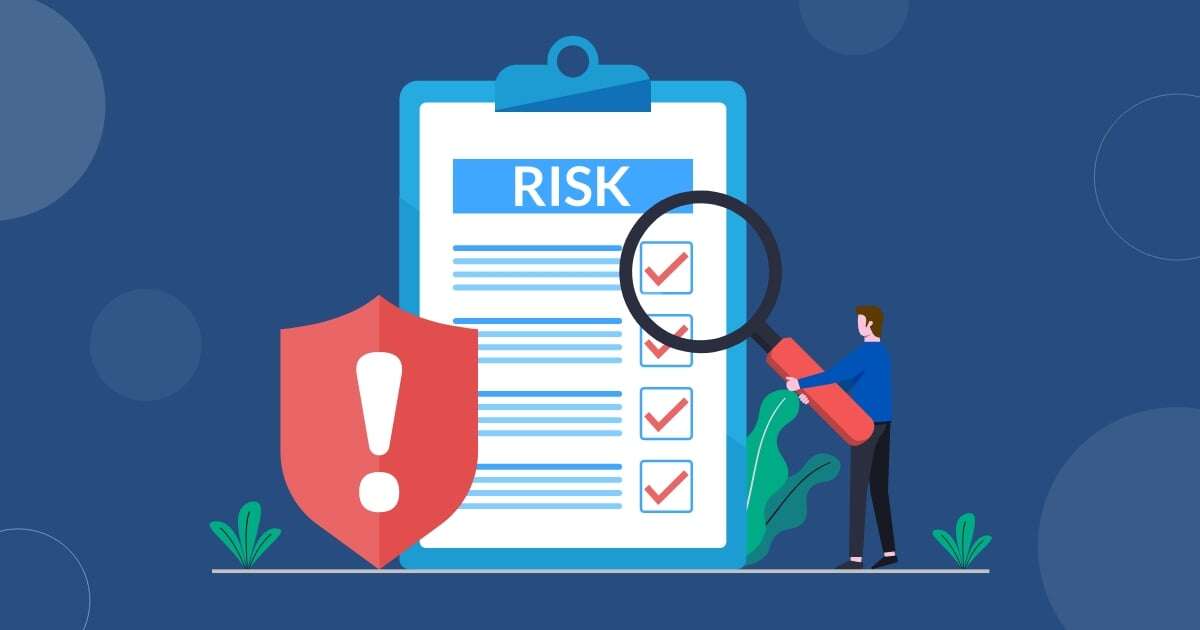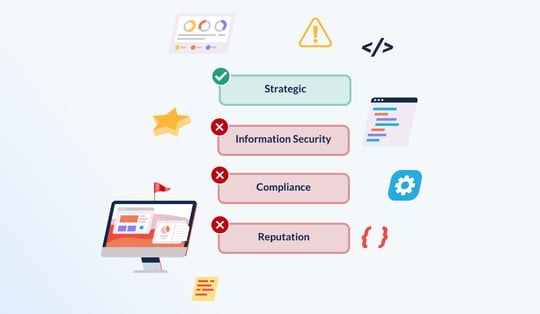Third-party risk management begins with assessing vendors and understanding their risks. Vendor risk profiling is a great way to manage your third-party vendors and the risks they pose.
Let's examine what vendor profiling is and how it can benefit your third-party risk management processes.
What Is Vendor Risk Profiling?
Vendor risk profiling is the process of identifying and evaluating current and emerging vendor risks that could threaten your organization or its customers. A comprehensive vendor risk profile considers all internal and external risks related to the product and services they provide as well as the risks unique to their organization, such as their financial health, reputation, cybersecurity practices, employee compliance training, etc.
A vendor risk profile is created using several tools and processes. Let's explore them:
- Inherent risk assessments identify the types of amounts of risks that the vendor’s products, services, and relationship pose to your organization. Using these assessments, you can determine the risk rating and criticality, which informs what specific information and documentation you’ll need to collect from your vendor.
- Due diligence is the process of analyzing specific vendor information and documents to verify whether your vendor can effectively manage identified risks. The initial due diligence process typically involves a vendor risk questionnaire, due diligence documentation, and a vendor risk assessment review.
As risks continue to emerge and change, it’s critical to periodically perform re-assessments to keep your vendor risk profile current. Due diligence is a risk-based activity, so your vendor’s risk rating and criticality informs the amount of due diligence and the intervals for review.
- Residual risk is the risk that remains after mitigation controls have been assessed and verified. The residual risk score reflects how effectively the vendor’s controls address the inherent risks.
Residual risk is calculated by a basic formula:

- The contract structure can contribute to the amount of risk present in the relationship. For example, a contract that lacks service level agreements (SLAs) or clauses, such as insurance or right to audit requirements, can increase the risk in the vendor relationship by leaving out key protections.
- Performance management considers how well your vendor meets your expectations for the relationship. Even if the vendor has excellent risk controls, poor performance introduces all types of risks to your organization, including operational, reputational, and financial risks. Be sure to continually review your vendor’s performance to determine if there are any new or hidden risks which could affect their risk profile.
- Risk monitoring ensures that you identify new and emerging risks between periodic risk re-assessments. Constant and consistent risk monitoring is essential for accurate vendor risk profiles.
By incorporating these components and examining the results, your organization will develop a holistic picture of the vendor’s risk and create an accurate vendor risk profile. No matter your organization’s methodology for incorporating these elements into the vendor risk profile, be sure that the profile is accurate, reliable, and easy to understand.

The Benefits of Creating Vendor Risk Profiles
Let's examine the benefits of vendor risk profiles now that we have an understanding of what goes into creating them:
- Improves vendor selection: Whether you’re comparing multiple vendors or determining overall vendor value, comprehensive vendor risk profiles are instrumental in the decision process.
- Enables better vendor risk management: All vendors have strengths and weaknesses. By examining comprehensive vendor risk profiles, your organization can objectively consider the areas that need improvement.
- Facilitates a more balanced view of vendor risks: Certain types or elements of vendor risk may be overlooked depending on stakeholders' interests. For example, suppose you're part of the information security team. In that case, you may not consider vendor performance or their financial health as important as cybersecurity controls. Comprehensive vendor risk profiles help stakeholders and organizations broaden their views and understanding of vendor risk and get everyone "singing from the same
songbook," as they say.
- Produces holistic vendor portfolio risk data for your board, senior management, and risk committees: Individual vendor risk profiles can be compiled to provide a more comprehensive view of risks across vendor product and service categories, your lines of business, or the entire organization. That macro-level data can help your management drive action or make key decisions, such as adding more resources.
Vendor risk profiles are a valuable tool that your organization can use to identify and address the risks that your third-party vendors pose to your organization. They provide beneficial insights to inform your vendor risk management activities and ensure more comprehensive risk management in your organization.





.gif?width=1920&name=Sample-Graphic-Animation%20(1).gif)





